
The evolution of cluster hiring
It’s the middle of the hiring season, and academia is facing a familiar problem. If this year goes as previous years have gone, the crop of newly minted assistant professors will be significantly less diverse than the people who earned degrees in the life sciences this year.
Historically excluded groups, sometimes called underrepresented minorities, earn a greater percentage of Ph.D.s in the biological sciences than ever before. But that progress is not filtering upward. According to a widely reported 2016 study, U.S. universities could close the diversity gap between Ph.D. earners and assistant professors in a single six-year tenure cycle, or with the hiring of only a few hundred professors into the national population of about 1,000 assistant professors in biomedicine.
However, making the change intentionally would raise questions of legality; federal law prohibits hiring on the basis of gender, race, ethnicity or underrepresented status. How can universities hire more historically excluded faculty without discriminating?
Administrators and funders at some universities across the country are testing out cluster hiring, which brings groups of professors from diverse academic backgrounds to work collaboratively on interdisciplinary problems, as a solution for underrepresentation and bias in faculty recruiting.
Topical clusters
When Adriana San Miguel accepted an offer to join the faculty at North Carolina State University in 2016, she said, becoming part of a topic-focused faculty cluster “was part of what was really attractive to me. … I thought being part of a cluster would help me meet other people and have a community that overlaps with my interests.”
San Miguel is a member of the university’s chemical engineering department, but she also belongs, along with two other assistant professors, to a cluster focused on synthetic and systems biology. The cluster doesn’t operate quite like a department — it’s a bit outside of the academic bureaucracy, with no students and fewer service requirements — but it does host journal clubs and other opportunities to meet colleagues both within and outside of the cluster who are interested in systems biology. San Miguel met her closest collaborator at a cluster seminar.
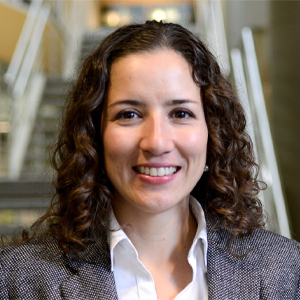
NC State has 20 clusters that include almost 70 of the university’s 2,000 faculty. According to Albert Keung, who belongs to the same cluster as San Miguel, clusters at their university serve the dual purpose of bringing in faculty who focus in specific areas and creating an intellectual community once they arrive.
Cluster hiring got its start in the 1990s at the University of Wisconsin–Madison, where the administration aimed to build nationally competitive research teams that would attract scholars studying buzzy interdisciplinary subjects. Twenty years ago, Madison’s list included specialties such as vitamin D and genomics; a recent round included precision medicine and advanced biomanufacturing. A department has incentives to be somewhat conservative in hiring experts in established subdisciplines, Keung said — for example, to make sure that someone has the expertise to teach specific core courses the department is responsible for. A cluster can take greater risks, however, and hire professors who specialize in emerging research topics, as well as using expertise from across the university to evaluate candidates.
The idea spread from Madison across the country as universities that hoped to become competitive quickly in hot research areas sought to attract groups of scholars working in those areas. A 2017 study found some 84 mentions of cluster hires on university and college websites.
Over time, administrators noticed that cluster communities can have benefits beyond fostering academic collaboration. A 2015 report by the Urban Universities for Health consortium noted that new faculty joining as part of clusters tended to be slightly more diverse than those who were one-off hires. At NC State, for example, after the cluster program was introduced, the proportion of faculty from underrepresented groups went from 16% to 18% universitywide. (The increase may have resulted from the unconscious bias training the search committees received, and which NC State later made part of its formal hiring process.) The observation made administrators wonder if cluster hiring could be a tool to reduce bias in faculty hiring.
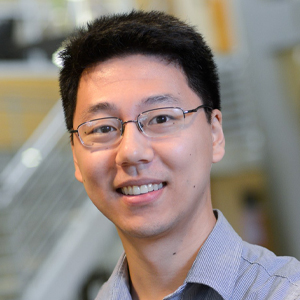
Diversity-focused clusters
In a critical appraisal of a cluster hire written by several social sciences faculty at Colorado State University in Fort Collins, one member of a hiring committee wrote that other members “looked at me as if I had committed a crime when I let them know that I wondered about the racial makeup of one of the women we were considering for an on-campus interview. Everyone stopped and I was told, ‘you cannot bring up a person’s race as part of the discussion.’”
The professor found the moment alienating. But employers have a difficult line to walk when they aim to diversify their workforce. Title VII of the Civil Rights Act prohibits making hiring decisions on the basis of race except in short-term, tightly regulated affirmative action programs.
Universities recently have begun to introduce clusters focused less on the new hires’ field of study than on using hiring practices that prioritize diversity. Advertising a list of new professor openings all at once can encourage more people to apply.
Milagros Rosal, vice provost for health equity at the University of Massachusetts Chan Medical School, said, “The cluster hire is intended to expand our list of potential candidates and, in doing so, diversify it.”
Broader job openings attract more applications — and a larger number of applicants has a greater chance of including scholars from diverse backgrounds.
Life scientists at the University of California, Berkeley, ran a cluster hire open to researchers focusing on any topic in the life sciences, explicitly aiming to promote faculty diversity. They received almost 900 applications. Hiring committee co-chair Rebecca Heald said, “When you have a thousand applicants, you’re going to have an amazing set of people to look at.”
The larger pool, Heald said, enabled the committee to “identify amazing scientists … who care about (diversity, equity and inclusion) issues.” The committee began by reading candidates’ statements about their commitment to diversity, which they used to reduce the pool to 200 applications that were distributed for review by their prospective home departments. Five eventually were hired; four of them were women and three were Americans from groups that demographers count as underrepresented minorities.
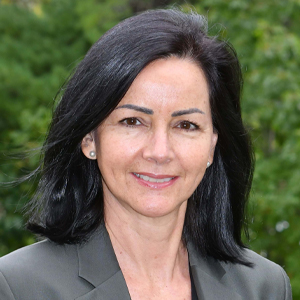
Cluster hires at universities often are planned centrally, with a college or provost’s office providing funding and conducting the search. Tension can arise when one group provides the money and the short list of candidates but another provides the lab space and the graduate students. Carla Freeman is an executive associate dean at Emory University. During a recent webinar sponsored by the National Institutes of Health, Freeman described a cluster hire at Emory that was open to all ranks, did not specify a department or even a discipline within the sciences, and received over 1,000 applications for four positions. The search ended up encompassing 11 departments, and 50 professors invested time as part of discipline-specific search committees. This was necessary, Freeman said, to make sure that when cluster candidates visited campus, their prospective departmental colleagues would be invested in recruiting them.
The process also had its detractors.
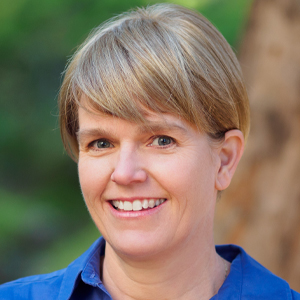
“There were some doubters and skeptics … saying, ‘let us just hire the best scientist and then we can worry about diversity,’” Freeman said. She and other proponents of cluster hiring counter that, in the past, focusing on the science has allowed biases to creep into hiring decisions. Equity proponents also point out that what applies for interdisciplinary hiring — the argument that having more perspectives on a problem can enrich the possible solutions — should go for differences of perspective that come from personal experience as well as academic specialty.
Exactly how to bring in more diverse professors is a difficult question, one that administrators take seriously — and not only because of the legal liability. Rosal emphasized that in reforming hiring practices, “We are trying to reduce bias, not increase bias.”
Best practices for equitable hiring
As Freeman found at Emory, coordinating multiple departments and a cluster committee to hire multiple professors can be a daunting task. But many cluster hiring committees incorporate less intensive practices that also can be, and increasingly are, used for traditional single hires. These include considering statements that explain a candidate’s commitment to diversifying higher education, anonymizing applications for the early rounds of a faculty search, and scrupulous use of quantitative evaluation tools, instead of fuzzy gut feelings, to rank candidates.

Considering an applicant’s race or ethnicity may be illegal, but considering their commitment to diversity is within bounds. Therefore, many hiring committees request a diversity statement that explains a candidate’s commitment to a more inclusive academy and their track record of promoting such a future. A candidate doesn’t have to be underrepresented to write a statement that makes clear their desire to promote a more diverse academy, but applicants with personal experience of structural racism tend to be more committed to changing the status quo.
Obscuring an applicant’s identity is another intervention. Many factors that are considered in hiring are known to benefit scholars from well-represented groups disproportionately. Some hiring committees are trying to put off learning these traits until they’ve formed a first impression of a candidate based on anonymous research and diversity statements. (See “Anonymous hiring.”)
A rubric, or a set of standards agreed on in advance and used to evaluate each application, also can help to reduce bias in evaluation. Writing a rubric forces a group to identify specific traits to assess in each candidate and then apply the same standard to everyone. It reduces the odds that a committee will rely on gut feelings, which can be influenced heavily by in-group biases that favor candidates who resemble the decider in some aspect such as demographic background, alumni status or membership in a shared community.
“The use of quantitative, standardized evaluation systems is critical,” UMass’s Rosal said. “There are a number of biases that are in most cases unconscious. ... People, with their best intentions, don’t realize they’re discriminating against people.”
NIH FIRST and national clusters
Based on the results from faculty clusters across the country, and in answer to pressure about the NIH’s slow progress in addressing well-documented inequality in funding and career transitions for scientists of color, NIH leaders decided in 2020 to invest $241 million in cluster hiring.
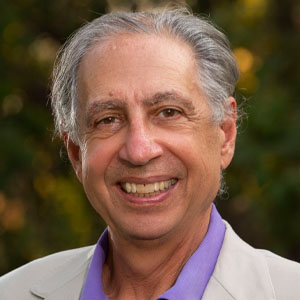
The NIH Faculty Recruitment for Sustainable Transformation, or FIRST, program made the first of three rounds of awards to universities this fall. Each of the six grantees is trying a new program aimed to increase faculty diversity sustainably, often including both recruiting components and professional development programs aimed to retain and promote new faculty.
NIH leaders emphasize that FIRST is an experiment. One of the first awards went to a center based at Morehouse School of Medicine that will evaluate whether it’s working as intended.
Whether diversity-focused or topical, enthusiasm for cluster hiring is supported so far more by case studies than by rigorous research.
Sociologist Steven Brint conducted a study on the impacts of topical cluster hiring on faculty publishing. He said he is skeptical of what he called “rather hyperbolic claims … that (universities are) going to solve the major challenges facing the country or the world through concentrating hiring on these high priority areas.”
In the study, he and two colleagues looked for evidence in the literature that faculty hired as part of a cluster publish more and collaborate more than other new faculty. They found that new cluster faculty wrote more papers, with more coauthors, but found few cases of extensive collaboration within clusters.
“There’s a boost to productivity once people are hired to a new institution,” he said. “Whether that’s because of cluster hiring or just the excitement of being in a new place and more advanced in one’s career, we can’t say.”
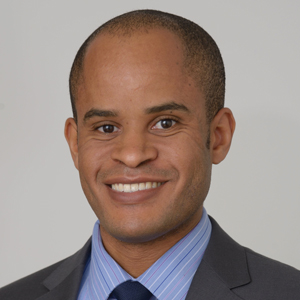
The work does not demonstrate conclusively that cluster hiring is either effective or ineffective for pushing faculty to collaborate and making them more productive. Brint said that ambiguity causes him to doubt whether the practice can meet the transformative goals administrators set.
As at Berkeley, the NIH has a delicate line to walk in promoting diverse hiring. Several institutes and centers recently rescinded notices that invited underrepresented scientists in particular to apply for grants; in a written statement explaining the retractions, the NIH’s deputy director for extramural research, Michael Lauer, and chief officer for scientific workforce diversity, Marie Bernard, explained that “while the spirit of the (notice of special interest) was laudable, it may have led to an impression that by linking demographic characteristics to grant proposals, applications supporting scientists from underrepresented groups would be automatically prioritized for funding.”
Still, the FIRST program may have ripple effects. At UMass, which applied for but did not land NIH FIRST funding in the first cycle, Rosal said the university is starting a smaller-scale cluster hire anyway.
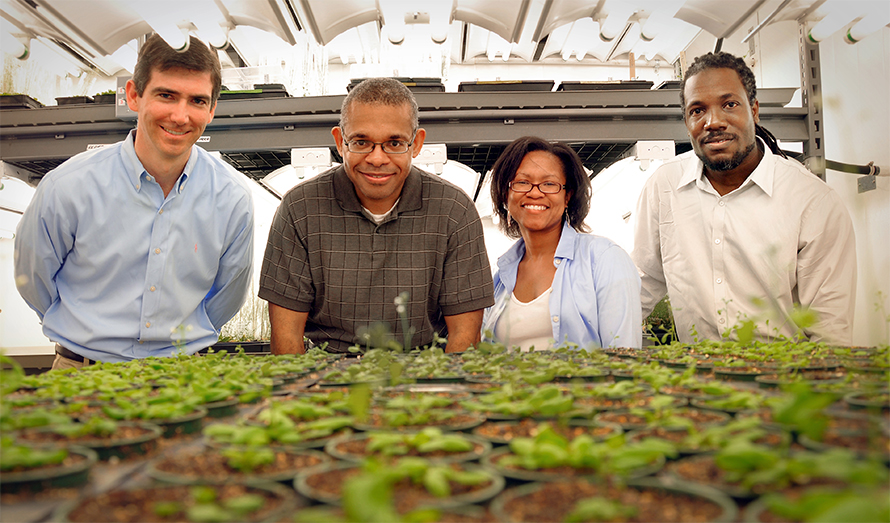
Retaining new hires
“It’s one thing to bring in people,” Berkeley’s Heald said, “but … the other thing that we really fail at too often is retaining diverse faculty we hire.”
Retention of historically excluded scientists is a problem at every career stage. Kenneth Gibbs, the first author of the study that showed that increasing representation among Ph.D. recipients has not led to increased faculty representation, also has published research showing that underrepresented graduate students are more likely to lose interest in a faculty career than their well-represented peers by the time they earn a degree. Likewise, unless new professors from historically excluded backgrounds experience academia as a good environment for a whole career, efforts to bring in young professors may fail to effect lasting change.
Cohort-based models such as the celebrated Meyerhoff Scholars Program at the University of Maryland, Baltimore County, have shown that peer communities can encourage historically excluded scientists to stay in academia. Proponents of cluster hiring hope that a similar sense of community will result from the peer groups of new professors who start as part of clusters.
In addition, every program that NIH FIRST is supporting includes attention to professional development, retention and promotion. At UMass, new faculty who join as part of a cluster will be assigned both a mentor and a sponsor. These are different roles, Rosal explained. While “a mentor would be somebody that you go to for ideas, assistance, guidance … a sponsor is somebody that has a lot of power and influence, and would promote you when there are opportunities.”
Because of the differences among cluster hiring models — their goals, the interventions they use and their funding support — it is difficult to compare these programs, and it may be impossible to quantify their overall impact on faculty diversity. Still, the popularity of cluster hiring to increase diversity represents a change that many academics welcome.
“The lack of representation impacts our ability to teach our students things that are relevant to the increasingly diverse population, as well as to notice and investigate knowledge gaps,” Rosal said. The more representation among faculty in her field of clinical research, she said, the more relevant their research can be.
Anonymous hiring
Perhaps you’ve read that when an orchestra conducts its auditions behind a screen to conceal musicians’ identities, it tends to hire more women.
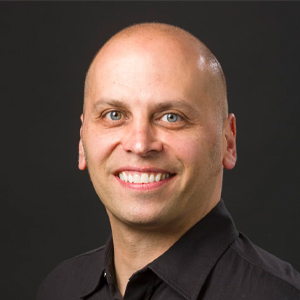
It may be harder to anonymize a scientific finding than a musical performance. Junior researchers tend to work on named genes at named institutions, publishing their findings in numerically ranked journals with senior colleagues who have spent years building their reputations in specific niches. All those layers of reputation and pedigree, said Yale molecular biology and biophysics department chair Enrique De La Cruz, can get in the way of assessing a candidate’s own contributions.
De La Cruz’s department recently conducted a faculty search requiring candidates to remove identifying information from their application materials. The hiring committee received numbered portfolios; only Tara Noel, De La Cruz’s assistant, knew the identity of the person behind each number. She had to take care not to let so much as a pronoun slip until the first cut had been made, after which the committee looked at CVs and recommendation letters.
“This search was hard, because there’s a lot of work and (diversity is) a sensitive topic,” De La Cruz said. He wasn’t on the hiring committee himself because he wanted to make sure “that people don’t falsely attribute the significance and commitment to (equity) as something that was imposed by the chair because of my background. … We don’t want someone saying, ‘Oh, Enrique made everybody do this.’ No, I didn’t. They did it. And I feel very proud of that.”
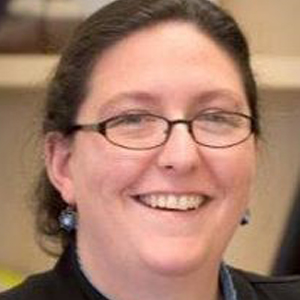
Noel was most impressed by the committee’s considered construction of a rubric for assessing candidates, which she said helped members with “getting away from this idea of a gut feeling: ‘I have a great gut feeling about this person based upon their CV.’ It got everybody away from that.”
The committee succeeded in the sense that it made an offer to a candidate, a woman, who accepted the job. In addition, the committee considered a more than usually diverse pool of applicants; the share of applicants self-identifying as underrepresented minorities leapt from 3 of 169 during a search in 2020 to 22 of 194 in the anonymized search, and the number of women applicants doubled.
More than that, De La Cruz said, it succeeded in communicating to applicants that they were being evaluated for their work — and not to reach some diversity goal. As a first-generation scientist himself, he said, “We spend the rest of our lives questioning all the things that we were awarded or recognized for. … Even if you are the most qualified, you can’t shake that.”
Much like cluster hiring, the effect of anonymizing applications is not yet known. But De La Cruz’s department plans to use a similar approach when it next hires, and it has shared these practices with some 40 other institutions.
“The goal now is for us to get enough data to find out, is the juice worth the squeeze?” De La Cruz said. “For us, it seemed to have a profound effect.”
Diversity in topical clusters
Cynthia Wolberger, director of the biophysics and biophysical chemistry department at Johns Hopkins University School of Medicine, is juggling two concurrent cluster recruiting processes. One, funded by billionaire philanthropist–politician Michael Bloomberg, is focused on a scientific topic, as is traditional in cluster hiring. The second is aimed at recruiting more diverse scientists to the medical school.
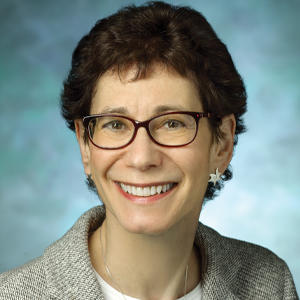
“They have in common the word ‘cluster,’” Wolberger said. Otherwise, she added, the university-wide topical hire and the medical school diversity hire were planned separately to achieve different aims. “One group was not talking to the other at all.”
The two recruiting efforts add up to a microcosm of what’s going on with this popular practice for hiring new faculty. A cluster hire can be agnostic to research subject and focus on hiring excellent researchers from diverse backgrounds; this is what the effort to hire four assistant professors in the basic sciences seeks to do.
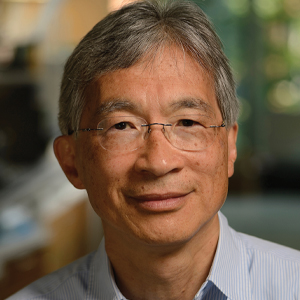
Or a hire can focus on researchers’ area of study — in this case, epigenome sciences. Wolberger and colleagues including Carl Wu, a member of the medical school and also the school of arts and sciences at Hopkins, wrote a competitive proposal to launch one of nine clusters that will recruit a total of 88 new faculty.
“What we really would like is to bring in people who come in with new ideas, new perspectives, new technologies, new techniques … that would complement what we’re currently doing in a very productive way,” Wu said.
Both models provide funding through extradepartmental channels to bring a group of new faculty to multiple departments in the same university at or around the same time. They also are based on a conviction that the connections within these cohorts are valuable, whether the commonality is in research focus or social ties.
Even in the topical hire, however, diversity is a goal. According to Denis Wirtz, Hopkins’ vice provost for research, and Julie Messersmith, the university’s executive director of research, equity has been a priority as they plan to distribute the large Bloomberg gift. The administrators plan to set benchmarks, determined field by field, for representation among the new faculty. Because committees hire several people, Messersmith said, “There’s a lot more accountability you can have in cluster hiring.”
Enjoy reading ASBMB Today?
Become a member to receive the print edition four times a year and the digital edition monthly.
Learn moreFeatured jobs
from the ASBMB career center
Get the latest from ASBMB Today
Enter your email address, and we’ll send you a weekly email with recent articles, interviews and more.
Latest in Careers
Careers highlights or most popular articles

Upcoming opportunities
Calling all biochemistry and molecular biology educators! Share your teaching experiences and insights in ASBMB Today’s essay series. Submit your essay or pitch by Jan. 15, 2026.

Mapping proteins, one side chain at a time
Roland Dunbrack Jr. will receive the ASBMB DeLano Award for Computational Biosciences at the ASBMB Annual Meeting, March 7–10, just outside of Washington, D.C.

Exploring the link between lipids and longevity
Meng Wang will present her work on metabolism and aging at the ASBMB Annual Meeting, March 7-10, just outside of Washington, D.C.

Upcoming opportunities
Calling all biochemistry and molecular biology educators! Share your teaching experiences and insights in ASBMB Today’s essay series. Submit your essay or pitch by Jan. 15, 2026.

Defining a ‘crucial gatekeeper’ of lipid metabolism
George Carman receives the Herbert Tabor Research Award at the ASBMB Annual Meeting, March 7–10, just outside of Washington, D.C.

Building the blueprint to block HIV
Wesley Sundquist will present his work on the HIV capsid and revolutionary drug, Lenacapavir, at the ASBMB Annual Meeting, March 7–10, in Maryland.

